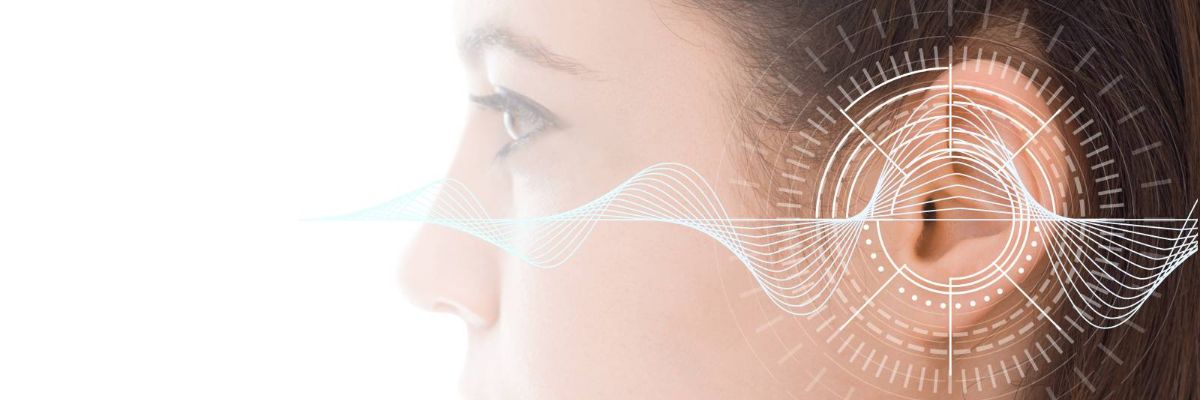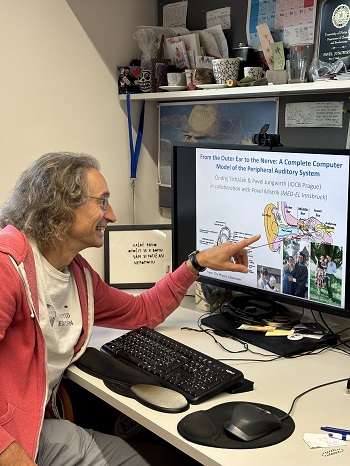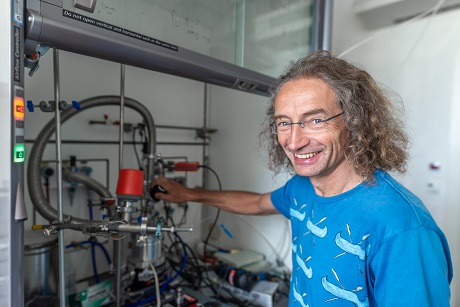
A new computer model of the ear to simulate hearing and improve cochlear implants
22. 11. 2023
From the outer ear to the auditory nerve. A new complete computer model of the ear, developed by researchers at the IOCB of the CAS, will allow the non-invasive study of hearing in mammals, including humans, on an unprecedented scale. It should help not only better our understanding of the human ear, but also improve hearing aids. The research results have been published in Hearing Research.
Hundreds of hours of programming and tens of thousands of lines of code are what lie behind the creation of a new computer model of the ear, its design based on the latest knowledge of the physiology and molecular principles of auditory perception.
The idea to develop this tool came from the mind of Pavel Jungwirth, head of the Molecular Modeling research group at the Institute of Organic Chemistry and Biochemistry of the CAS. At first glance, the idea does not seem to fit thematically into the scope of his work. But appearances can be deceiving...
Auto-translate (English) subtitles available in video settings.
“A mixture of craziness and personal reasons gave rise to this idea. My son had meningitis as a baby, as a result of which he has a severe hearing impairment. I wanted to understand the issue in greater detail,” Pavel Jungwirth explained. “Besides, I realized that the transmission of information in the ear is mediated by fluxes of calcium and potassium ions, which is exactly what my research group is working on,” the researcher noted with a smile.
A bottom-up model
It all started back in 2011, when the researcher met Pavel Mistrík from MED-EL, an Austrian company that makes use of computer models to develop cochlear implants. Jungwirth decided to embark on the project of developing a complete ear model, though, perhaps naively, he believed the work would take three years or so at most. That, however, was a miscalculation. It was thanks to his exceptionally talented student, Ondřej Ticháček, that it became possible to complete the demanding research after nearly twelve years.

Pavel Jungwirth from the Institute of Organic Chemistry and Biochemistry of the CAS.
The parameters for the development of the model come from both animal experiments and calculations. “Our project is unique in that we as physical chemists approached and went at it ‘from the bottom up’ – i.e., from the molecular level, ion channels and currents to the level of the organ,” Jungwirth says.
As a result, the model is not only physiologically correct, but also accurately reflects the physical phenomena that occur within the ear. It maps out in detail how incoming sound is converted into mechanical vibrations in the middle and inner ear, then into electrical excitations of the outer and inner hair cells, and finally transformed through the action of neurotransmitters into a series of electrical signals in the auditory nerve. These are then transmitted to the central nervous system.
Better hearing aids on the horizon
“At the moment, we’re working with a default model of a healthy ear, but it is not a problem to ‘damage’ it and model various genetic hearing defects or other hearing impairments,” Jungwirth explains.
This allows experts to learn more about the intricate mechanisms of different forms of hearing impairment, which opens the way to improving hearing aids and cochlear implants. In fact, a computer model of the ear makes it possible to obtain data that are difficult to obtain via the experimental method. Physical measurements carried out on the human ear would be too invasive and therefore the only thing that has been in play so far is the use of animal models.

Pavel Jungwirth works on modelling the interaction of ions with biomolecules in solutions. (CC)
“Computer modelling can, to a certain extent, replace or complement these experiments,” Jungwirth notes. The new tool for basic hearing research that was born under his hands will mainly benefit humans. “However, what we have is a general model of the mammalian ear, so if someone would need to find out the state of their hamster’s hearing, we could help them with that as well,” he adds.
A tool for all
The computer model of the ear implemented in the programming language and numerical computing environment MATLAB has now been made available to the broad scientific community. It can be used by anyone interested in modelling different types of hearing disorders or looking at how to compensate for them with the use of hearing aids or cochlear implants.
Prepared by: Radka Římanová, External Relations Division, CAO of the CAS, drawing on the press release by the Institute of Organic Chemistry and Biochemistry of the CAS
Translated by: Tereza Novická, External Relations Division, CAO of the CAS
Photo: Shutterstock; Jana Plavec, External Relations Division, CAO of the CAS; Institute of Organic Chemistry and Biochemistry of the CAS
 The text and photos marked CC are released for use under the Creative Commons license.
The text and photos marked CC are released for use under the Creative Commons license.
Read also
- A trapped state: The pandemic impact on public attitudes, trust, and behavior
- Aerial archaeology: Tracing the footsteps of our ancestors from the sky
- Archaeologists uncover ancient finds along Prague Ring Road
- Our microbiome largely depends on what we eat, says microbiologist Michal Kraus
- The ABCs of writing: Why did its invention mark a turning point for humankind?
- We learn, remember, forget… What can memory actually do? And can we outsmart it?
- New Center for Electron Microscopy in Brno opens its doors to global science
- The hidden lives of waste: What can we learn from waste workers and pickers?
- A unique lab is hidden right beneath Prague’s Vítkov Hill
- Renewables are a strategic investment in European security, scientists say
The Czech Academy of Sciences (the CAS)
The mission of the CAS
The primary mission of the CAS is to conduct research in a broad spectrum of natural, technical and social sciences as well as humanities. This research aims to advance progress of scientific knowledge at the international level, considering, however, the specific needs of the Czech society and the national culture.
President of the CAS
Prof. Eva Zažímalová has started her second term of office in May 2021. She is a respected scientist, and a Professor of Plant Anatomy and Physiology.
She is also a part of GCSA of the EU.